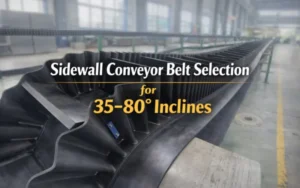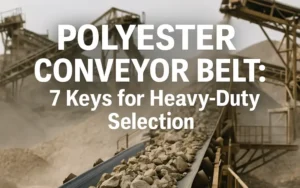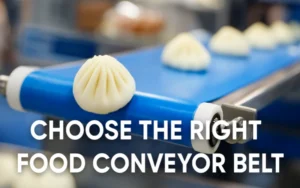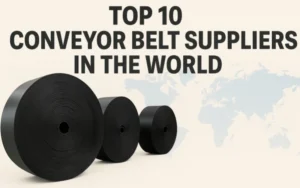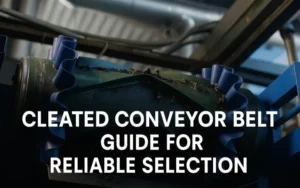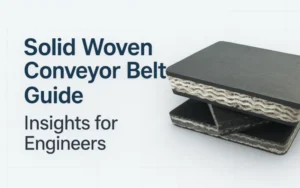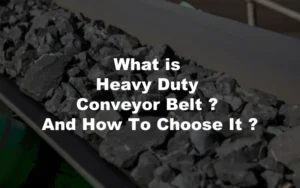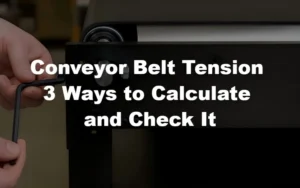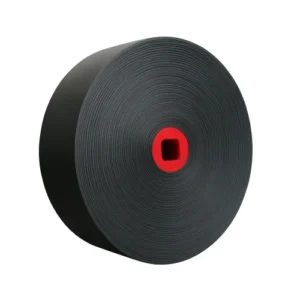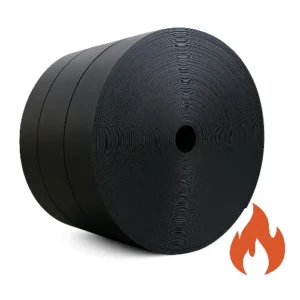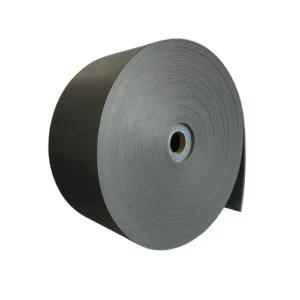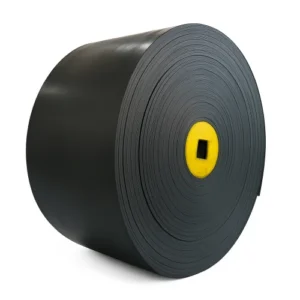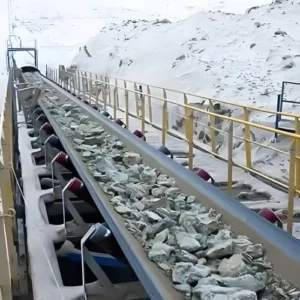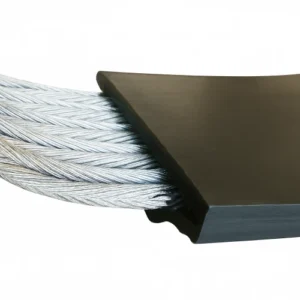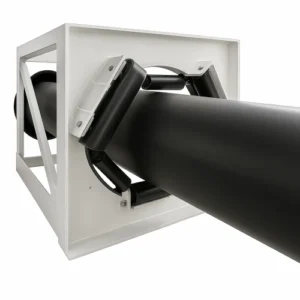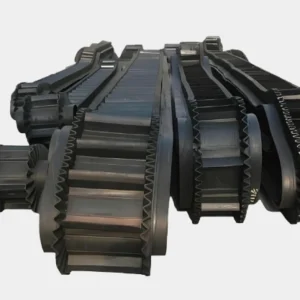Downtime from weak belts costs plants millions. Oils, chemicals, and weather attack standard covers, forcing frequent shutdowns. A neoprene rubber conveyor belt changes the equation with proven resistance to oil, ozone, and moderate heat. Backed by ASTM and ISO testing, it lasts longer and reduces costly replacements. Buyers gain predictable performance without paying for extreme compounds. With the right specifications, neoprene belting offers a smart path to stability, lower total cost, and smoother operations across industries.
1.Industrial Pain Points with Neoprene Rubber Conveyor Belt
Every plant manager I meet says the same thing: downtime kills productivity. The conveyor belt is usually where the trouble starts. Standard rubber belts are fine on paper, but once they face oil, chemicals, or harsh weather, they break down fast. That’s why so many buyers are now asking about neoprene rubber conveyor belt solutions.
Oil exposure is the first headache. In food plants, recycling lines, or chemical facilities, oils and fats attack regular SBR belts. The rubber swells, the cover softens, and traction disappears. A swollen belt slips on the pulley, which means extra re-tracking and more power consumption. With a neoprene rubber conveyor belt, you get stronger resistance to oil. It keeps its shape, holds grip, and stays reliable even under constant exposure.
Chemicals are another enemy. Fertilizers, mild acids, and alkalis weaken conventional covers in a matter of weeks. Once cracks appear, the belt loses flexibility and can snap without warning. A neoprene conveyor belt stands up better here. Its chlorine-based structure makes it less reactive to many solvents. This isn’t invincibility, but it gives you breathing room before the next change-out.
Outdoor weather finishes the list. Sunlight, ozone, and temperature swings age ordinary belts quickly. At ports, power stations, or quarries, operators often see belts turning brittle after a single season. Neoprene, however, is far more resistant. According to ASTM D1171, neoprene consistently shows higher ozone resistance than natural rubber (ASTM source). That’s why it remains a popular choice in outdoor systems.
And here’s the hidden cost: unplanned downtime is expensive. Deloitte has reported that industrial downtime can cost manufacturers $50 billion every year (Deloitte report). Conveyor breakdowns are one of the top culprits. Buying a cheaper belt may look smart at first, but after a few failures, the real cost becomes obvious. Labor, replacement, and production delays all stack up.
Think of the failure chain. Oil softens the cover. Slippage raises heat. Heat accelerates cracking. The splice gives out. The line stops. Each weak point triggers the next. Neoprene belting helps cut this chain short because it balances resistance across oil, chemicals, and weather in a way SBR cannot.
My usual advice to buyers is simple. Count how many hours per week your belt spends in contact with oil. Then add up the sunlight hours if your system is outdoors. If chemicals splash on top, the answer is clear—you need a neoprene rubber conveyor belt. It won’t solve every problem, but it will give you longer service life and fewer shutdowns compared with the usual options.
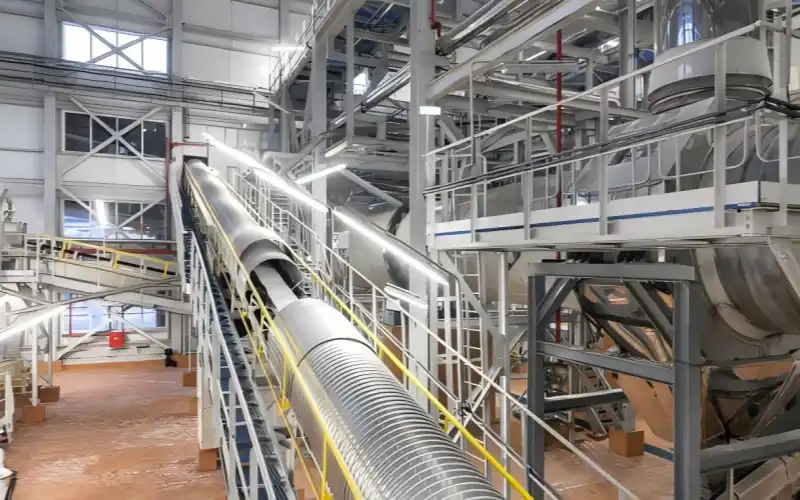
2.Neoprene Rubber Conveyor Belt Properties
When you look at a neoprene rubber conveyor belt, the first thing to know is that the cover compound is what sets it apart. Neoprene, also called polychloroprene, is a synthetic rubber created by DuPont nearly a century ago. What makes it special is its chemistry. The backbone includes chlorine atoms, and that small change gives it strength where other rubbers fail—around oils, sunlight, ozone, and moderate heat.
Oil exposure is where differences show quickly. Plants that process oily bulk, lubricants, or greasy food products know the problem: standard SBR belts swell, lose traction, and crack. A neoprene conveyor belt slows that reaction. Its cover doesn’t absorb oil as fast, which means less swelling and more stable grip. To confirm this in the lab, engineers use ASTM D471 , a method where rubber samples are immersed in oil or fuel and then checked for swelling or weight change . The test explains why neoprene lasts longer than natural rubber in oily environments.
Outdoor weather is another challenge. Sunlight and ozone cause fine cracks that turn into major failures. Ordinary belts often lose flexibility within months outdoors. Neoprene resists this aging process, which is why it shows up in ports, quarries, and exposed power stations. Its performance has been proven in ASTM D1171, a standard procedure for testing ozone resistance in rubber. Real-world use reflects the same: neoprene belts hold flexibility and resist cracking much longer than basic rubbers.
Heat resistance is a third factor. Standard neoprene covers run safely up to about 200°F (≈93°C) before they begin losing mechanical strength. Modified compounds can stretch that limit closer to 150–200°C, which is enough for many industrial systems that see mid-range heat. Neoprene cannot match EPDM in high-temperature environments, but for mixed conditions involving oil and moderate heat, neoprene belting often strikes the right balance.
Research supports its reputation. The National Institute of Standards and Technology (NIST) highlights neoprene as one of the most versatile synthetic rubbers, pointing to its durability in oils, solvents, ozone, and moderate heat. NIST also notes its role in conveyor belts, hoses, and gaskets. That versatility explains why industries still rely on a neoprene rubber conveyor belt when they need one material to cover multiple risks without overspending.
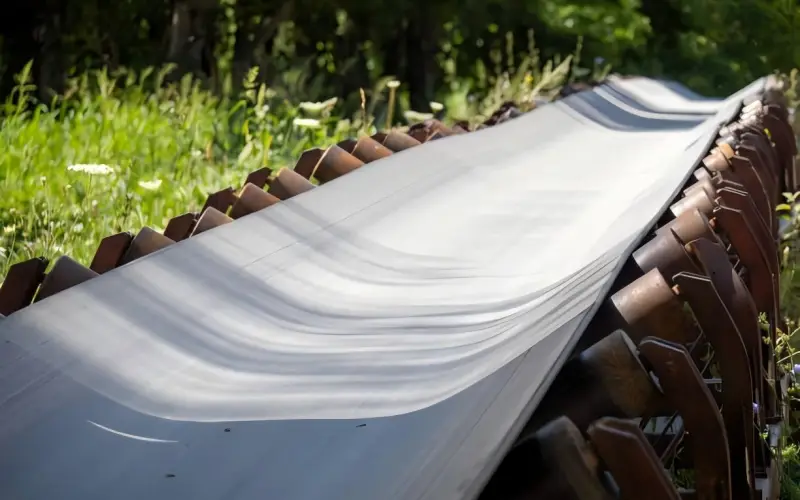
3.The History and Development of Neoprene Rubber Conveyor Belt
The story of the neoprene rubber conveyor belt is older than most people think. Neoprene was born in a DuPont lab back in 1930. At the time, the U.S. wanted to reduce its dependence on natural rubber imports. The idea was simple: if you can’t get enough trees to tap, why not cook up a new rubber in a beaker?
The first real test came during World War II. When natural rubber supply lines were cut, neoprene suddenly became the star of the show. It showed up in gaskets, seals, and hoses for tanks, planes, and ships. Soldiers probably never knew the name, but without neoprene, a lot of engines would have leaked oil or seized up. In a way, neoprene was an unsung hero of the war effort—no medals, but plenty of mileage.
After the war, industries quickly realized they had something special. Neoprene didn’t just resist oil; it could survive sunlight, ozone, and reasonable heat. That meant factories could run belts longer without the dreaded “crack-and-replace” routine. By the 1950s, companies were rolling out neoprene conveyor belt covers for food plants, chemical facilities, and ports. Downtime went down, and maintenance crews breathed a little easier.
By the 1970s, the material had built a reputation. It wasn’t the cheapest option on the catalog, but it was reliable. Engineers liked it because it solved multiple problems at once—oil, weather, and heat—without having to jump straight to more expensive materials like nitrile. Tests like ASTM D471 (oil resistance) and ASTM D1171 (ozone resistance) gave the data to back up what plant managers already saw in the field.
Fast forward to today, and the legacy still holds. A neoprene rubber conveyor belt has moved from wartime necessity to everyday workhorse. It’s not flashy, but then again, when did a conveyor belt ever need to be flashy? Its job is to last, and that’s exactly why neoprene is still around.
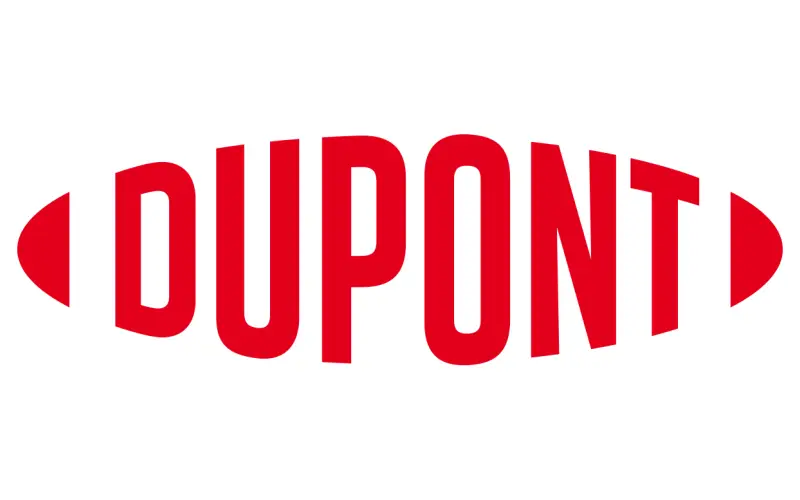
4.The Core Advantages of Neoprene Rubber Conveyor Belt
When you spec a neoprene rubber conveyor belt, you’re not chasing a single superpower. You’re buying balance. Oil on Monday, sunshine on Tuesday, a warm shift on Wednesday—this belt keeps its cool without drama. That’s the point.
4.1 Oil resistance: fewer swells, fewer sighs
Grease happens. Lubricants drip. Processed materials carry fats. A standard SBR cover swells and loses traction. You slow the line, re-track, and wish you hadn’t bought the “budget” belt. A neoprene rubber conveyor belt slows the uptake of oils, so grip stays longer and splices live an easier life. Labs prove it by soaking rubber in fuel or oil and measuring mass and volume change—ASTM D471 is the common yardstick . Less swelling = fewer stops = calmer operators.
4.2 Weathering: ozone and UV don’t get a free pass
Outdoors, rubber ages two ways: cracks you see and micro-damage you don’t. Ozone attacks double bonds, sunlight speeds it up, and a cheap cover gets brittle fast. A neoprene conveyor belt wears slower here. Its chlorine-bearing backbone stands up better, so the cover stays flexible and the top layer doesn’t powder off. Ozone resistance isn’t guesswork; ASTM D1171 stretches and exposes samples until cracks show. Your win is simple: fewer early-life cracks, fewer “mystery” splice failures.
4.3 Heat Resistant: the middle lane that most plants actually need
Not every line runs red-hot clinker. Most run warm, with occasional peaks. Standard neoprene covers handle continuous service around 200°F (≈93°C) before strength tails off; tuned compounds push into 150–200°C ranges depending on duty. If your process lives in the mid-zone—dryer outlets, baked goods, warm aggregates—a neoprene rubber conveyor belt holds shape and traction without forcing you into exotic, high-cost compounds. Save the premium elastomers for true furnace duty.
4.4 Flame behavior: compliance you can point to
Some sites need flame performance to pass audits. With the right compound, neoprene belting can satisfy ISO 340 (propane flame test with after-flame limits), giving you a checklist-friendly citation when safety teams come calling . It’s not a fire blanket; it’s engineered self-extinguishing behavior. The practical benefit is risk reduction and smoother approvals.
4.5 System-level wins your crew will notice
Traction stability. Less oil swell means your drive drum sees a consistent coefficient of friction. That cuts slip heating and the “ratchet” feel during restarts.
Splice longevity. When the cover stays elastic and crack-free, lap joints and hot splices keep their strength. Translation: fewer weekend callouts.
Tracking sanity. A belt that doesn’t balloon or harden holds alignment better, so idlers live longer and energy use stays predictable.
Cleaner maintenance. Neoprene sheds less chalky dust outdoors, which means fewer wipe-downs around bearings and sensors.
4.6 Where it fits best (and when to look elsewhere)
If your checklist reads some oil, some sun, some heat, a neoprene rubber conveyor belt is the easy answer. Food rendering lines, recycled plastics, fertilizer blends, open-air stockyards—these are classic wins. If the box you tick is “heavy fuel all day”, you’ll probably compare against nitrile. If you live at very high continuous temperatures, you’ll compare against EPDM or specialized heat compounds. The beauty here isn’t “best at one thing”; it’s good at many, which often delivers the lowest downtime per dollar.
4.7 Why it saves money without the spreadsheet
You already know the math: one unplanned stop costs more than a stronger cover ever will. What you feel day-to-day is the belt not being a headline. The line hits speed. The splice behaves. The maintenance log stays boring. That quiet reliability is the business case for a neoprene conveyor belt—and yes, the finance team can call it reduced TCO if they like.
4.8 Proof points you can cite without phoning a friend
- Oil and fuel immersion testing: ASTM D471 defines how to quantify swell and mass change, so you can compare compounds apples-to-apples.
- Ozone cracking resistance: ASTM D1171 describes exposure and rating methods for weather-aging comparisons.
- Flame test reference: ISO 340 specifies conditions and pass/fail behavior for flame-retardant conveyor belts .
Wrap it your way: if your site deals with oil mist, open air, and mid-range heat, spec a neoprene rubber conveyor belt and let boring reliability do the talking.
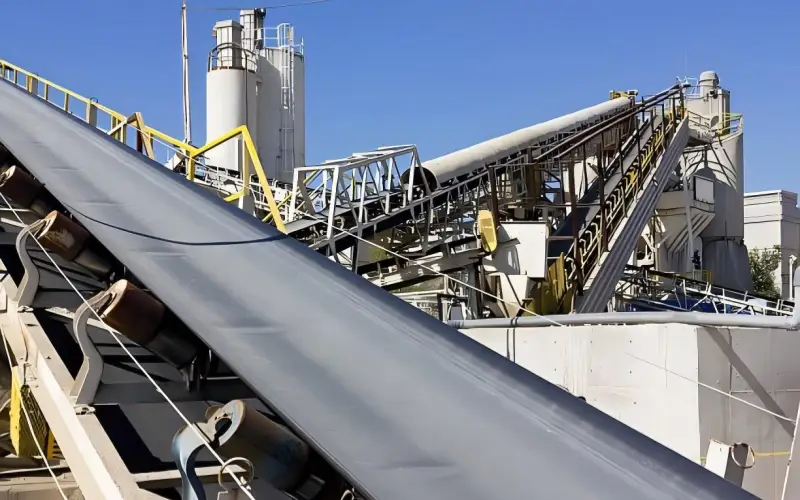
5.Applications of Neoprene Rubber Conveyor Belt
A neoprene rubber conveyor belt earns its keep where conditions refuse to stay simple. Oils show up when you don’t want them. Weather changes in minutes. Heat drifts between warm and hot. Let’s look at how this belt plays in the real world—industry by industry.
5.1 Food industry: clear lines between contact and non-contact
Here’s the rule of thumb. Direct food contact requires a compliant, food-grade material. Standard neoprene is not automatically food-grade. Only formulations that meet FDA 21 CFR 177.2600—and pass extractives limits—qualify for repeated food contact. Always ask for supplier documentation and test reports before you put any belt against bare food.
So where does a neoprene rubber conveyor belt fit in food plants? Non-contact and packaging zones. It’s a smart choice for moving boxed goods, bagged ingredients, bottles, and cans. It also shines on oily by-products and waste handling, where ordinary covers swell and slip. If you truly need food contact, you step up to certified food-grade materials (e.g., PU, PVC, silicone, or a neoprene formulation explicitly listed as compliant to 21 CFR 177.2600).
So keep neoprene conveyor belt solutions in the packaging hall, palletizing, and by-product lines; reserve direct-contact runs for certified food-grade belts. Your QA team—and your auditor—will sleep better.
5.2 Chemical plants: fewer shutdowns, safer maintenance windows
Chemicals don’t argue; they just attack. In blending, solvents and light hydrocarbons show up as mist or splash. A neoprene rubber conveyor belt slows that damage, so you schedule changeouts—not emergency stops. The other advantage sits outside the belt: safer maintenance windows. OSHA’s Process Safety Management (PSM) framework is all about preventing releases and reducing exposure during interventions. Belts that fail less often reduce those interventions.
If your process is truly oil-heavy or solvent-rich all day, you’ll compare against NBR. But in mixed-duty areas—packaged chemicals, auxiliary handling, solvent traces—neoprene belting tends to hit the reliability/price sweet spot.
5.3 Ports and terminals: sun, ozone, salt, repeat
Ports are rough on gear. You get UV, ozone, salt air, and stop-start loads. A neoprene rubber conveyor belt helps outdoor runs keep their shape and grip when a basic cover would crack early. It also supports a safer deck: fewer sudden slips, fewer fragments, fewer panic stops. On the operations side, the IMO’s safety guidance keeps pushing toward equipment and practices that lower risk during cargo handling; belts that survive outdoor exposure contribute to that goal.
Think of it this way: when a ship is alongside, minutes matter. If your conveyor is the holdup, everyone knows it.
5.4 Power plants and metallurgy: continuity beats drama
Coal handling, ash, scrap, pellets—none of it is gentle. Temperature drifts, surfaces get oily, and runs can sit half outdoors. A neoprene rubber conveyor belt handles that middle ground: enough heat tolerance for warm streams, enough outdoor stability for exposed segments, enough oil resistance for lubricated zones. That steadiness helps you avoid the small stoppages that stack up across a shift.
Why does continuity matter? Energy systems feel small interruptions fast. The U.S. EIA tracks reliability, and even a few hours of grid interruption per year ripple through costs and schedules. Belts that fail less often keep your yard moving and your plant focused on generation—not emergency repairs.
5.5 Common selection patterns you’ll recognize
- Mixed exposures, moderate heat:choose a neoprene rubber conveyor belt for fewer surprises across the week.
- Heavy oils all day:compare against nitrile; keep neoprene conveyor belt in auxiliary zones.
- High continuous heat:go EPDM or purpose-built heat compounds; use neoprene belting for cooler legs or outdoor transfers.
- Regulated food contact:only use certified, documented food-grade materials that meet the FDA rule; standard neoprene is a no.
If your site rotates between oil, outdoor exposure, and warm duty, you’ll get more uptime from a neoprene rubber conveyor belt than from a bargain cover—without paying for an extreme specialist. That balance is the reason it keeps showing up in real facilities, not just in spec sheets.
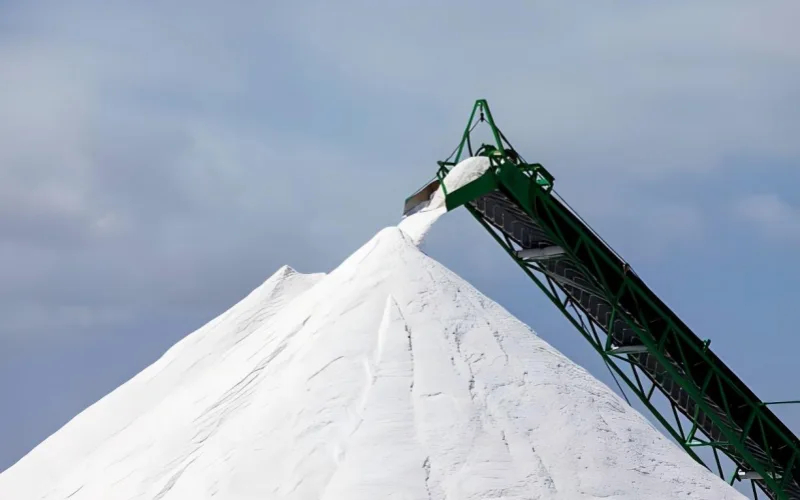
6.Neoprene Rubber Conveyor Belt vs SBR, NBR, and EPDM
Choosing the right conveyor belt cover isn’t about picking the most expensive option—it’s about matching material to conditions. A neoprene rubber conveyor belt is often called the “middle ground,” but that’s not a compromise. It’s a calculated balance between performance, durability, and cost. To understand its value, let’s compare it with SBR, NBR, and EPDM belts.
6.1 SBR: Low Price, Low Resistance
Styrene-butadiene rubber (SBR) is the budget player. It’s cheap to produce and works fine in environments without oils, solvents, or extreme heat. That’s why it shows up in basic conveying systems and low-risk applications.
But here’s the problem: SBR doesn’t like oil. Even small exposures cause swelling, softening, and surface cracking. In practice, this means frequent shutdowns when oily products or lubricants hit the belt. SBR also struggles outdoors. Ozone and UV damage set in quickly, making it a poor choice for ports or chemical plants.
The tradeoff is simple: you save upfront, but you pay later in downtime and maintenance. For operators who can’t afford frequent stoppages, SBR is a false economy.
6.2 NBR: High Oil Resistance, High Cost
Nitrile rubber (NBR) is the go-to when oil resistance is critical. Its molecular structure gives it strong resistance to petroleum-based oils and fuels. In refineries, recycling plants with heavy lubricants, or food processing with constant fat exposure, NBR belts perform extremely well.
The catch? Price. NBR is one of the more expensive belt compounds, and it usually comes with higher energy consumption due to stiffer handling properties. It also doesn’t perform as well outdoors; ozone and UV still degrade NBR covers, which means exposure protection is limited unless extra stabilizers are added.
So while NBR shines in high-oil environments, it may be overkill—and over budget—if your operation only faces moderate oil exposure. That’s where neoprene conveyor belt solutions often step in.
6.3 EPDM: Heat Expert, Oil Amateur
Ethylene propylene diene monomer (EPDM) rubber is famous for heat resistance. It comfortably handles continuous service above 150°C and peaks far higher. If your operation involves hot clinker, cement, or furnace output, EPDM belts are a natural choice.
But EPDM has a weakness: oils. Hydrocarbons penetrate and break down the cover much faster than in neoprene or NBR. That rules EPDM out for industries where lubricants, fats, or solvents are part of the daily environment. It’s also relatively costly compared with standard rubbers.
In short, EPDM is excellent for high-temperature duty but not for mixed conditions. It’s a specialist, not a generalist.
6.4 Neoprene: Balanced Performance Across the Board
Now we come back to neoprene rubber conveyor belt. Its biggest strength is balance. It resists oils better than SBR, holds up in sunlight and ozone better than NBR, and manages moderate heat far beyond SBR but without the premium cost of EPDM.
This “middle path” is not about compromise—it’s about versatility. Plants that handle oil one shift, outdoor exposure the next, and moderate heat on weekends often find that neoprene belting lasts longer and requires fewer shutdowns. It may not match NBR’s oil resistance or EPDM’s heat ceiling, but it delivers across multiple categories at once. That’s why it continues to be a top choice in industries from food packaging to ports and power plants.
Another advantage: supply and standards. Neoprene has been tested and benchmarked for decades, with clear data in ASTM standards and broad adoption across industries. Maintenance teams know how it behaves, and sourcing is easier than some specialty compounds.
6.5 Cost vs. Service Life
When evaluating materials, cost isn’t just about the purchase price—it’s about total cost of ownership (TCO). SBR looks cheap upfront, but short service life makes it expensive over time. NBR and EPDM deliver high performance, but their cost per meter and higher replacement expense can push budgets hard.
Neoprene sits in the middle. Purchase price is higher than SBR but lower than NBR or EPDM. Service life is longer than SBR, more stable outdoors than NBR, and good enough for many moderate-heat processes that don’t justify EPDM. This cost-to-performance ratio makes a neoprene rubber conveyor belt a frequent winner when budgets meet real operating conditions.
6.6 Where Neoprene Fits Best
Each rubber compound has its moment to shine:
- SBR keeps costs low but fades quickly in oils or outdoors.
- NBR stands firm in heavy oil and fuel environments but stretches budgets.
- EPDM thrives under extreme heat but struggles when oils come into play.
- Neoprene balances the equation—it takes on oils better than SBR, resists weather better than NBR, and handles moderate heat without the premium of EPDM.
That’s why so many plants still trust a neoprene rubber conveyor belt for mixed-duty conditions. It may not be the champion in a single category, but it’s reliable across the board. In real operations, where downtime is the cost nobody wants to pay, that balance is often the smartest choice.
Property / Material | SBR (Styrene-Butadiene) | NBR (Nitrile) | EPDM (Ethylene Propylene) | Neoprene Rubber Conveyor Belt |
Oil Resistance | Poor – swells quickly | Excellent – strong against oils & fuels | Weak – not suitable with hydrocarbons | Good – balanced resistance for moderate oil exposure |
Weather & Ozone Resistance | Weak – cracks outdoors | Fair – limited without stabilizers | Excellent – very strong outdoors | Strong – resists ozone & UV better than SBR/NBR |
Heat Resistance | Low – up to ~80°C | Moderate – up to ~100°C | Very high – continuous >150°C | Medium – ~93°C standard, up to 200°C with special grades |
Durability / Service Life | Short – frequent replacement | Long in oily environments, shorter outdoors | Long in high-heat settings, weak in oils | Long and stable in mixed-duty conditions |
Cost Level | Low – cheapest upfront | High – among the most expensive | High – specialty compound | Medium – higher than SBR, lower than NBR/EPDM |
Best Fit Applications | Low-risk, low-cost conveying | Oil refineries, heavy lubricant zones | Cement, steel, and furnace materials | Mixed exposure: oils, outdoor, moderate heat |
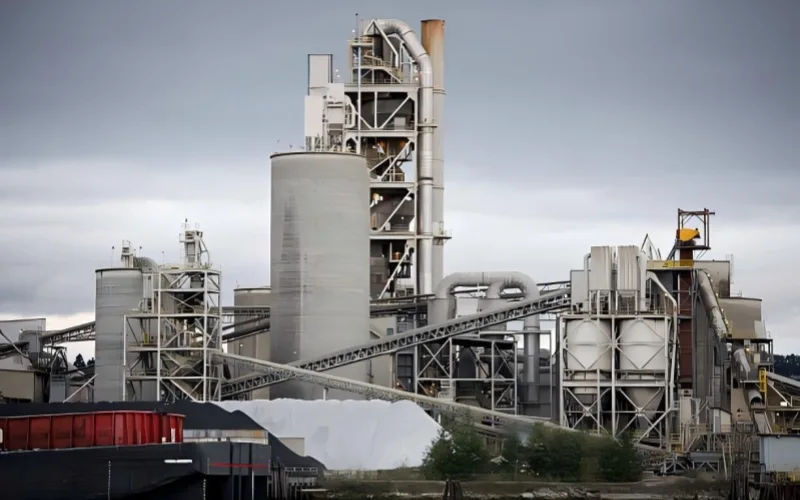
7.Testing Standards for Neoprene Rubber Conveyor Belt
A neoprene rubber conveyor belt is only as good as the data behind it. Claims like “oil resistant” or “flame retardant” mean little without independent testing. That is why international standards exist—to give buyers hard numbers, not just sales language. Here are the most relevant tests you should expect to see on a supplier’s datasheet.
7.1 ASTM D471: Oil Resistance in Numbers
How the test works: Rubber samples are immersed in reference oils such as IRM 903 or ASTM Fuel B for a set time (typically 70 hours) at elevated temperatures (often 100°C). After immersion, the samples are measured for changes in weight, volume, and tensile strength (ASTM D471).
Key results:
- Volume change ≤ 20% is generally considered good oil resistance.
- NBR rubbers may show < 5%
- SBR can swell by 30–60%, leading to severe softening.
- A neoprene conveyor belt typically records 8–15% volume increase under ASTM D471, which proves it can handle moderate oil exposure without major deformation.
What this means for you: If your plant sees lubricants, greases, or oily bulk, a belt with documented ASTM D471 results around 10% swelling will last significantly longer than SBR alternatives.
7.2 DIN 53521: Oil Swelling Rate Verification
How the test works: Samples are immersed in oils like IRM 902 or ASTM No. 1 oil for 72 hours. The change in volume and hardness is measured (DIN 53521).
Performance categories:
- ≤ 10% volume change→ Excellent
- 10–25%→ Acceptable
- 25%→ Not suitable for oil-prone service
Where neoprene fits: Neoprene usually shows 10–20% swelling, which places it in the “acceptable to strong” range. It won’t beat nitrile rubber in long-term oil immersion, but it’s far superior to SBR. For conveyors exposed to periodic oil contamination rather than constant submersion, neoprene belting is an ideal compromise.
7.3 ISO 340: Flame Resistance for Regulated Sites
How the test works: A conveyor belt sample is exposed to a 6 kW propane flame for 15 seconds, then the flame is removed. The belt must self-extinguish within a set time, and burning droplets must not ignite the test paper below (ISO 340).
Pass criteria:
- Self-extinguishing within 15 seconds
- No flaming droplets that spread fire
What neoprene achieves: Modified neoprene compounds can meet ISO 340 Class 2, which requires self-extinguishing behavior within the 15-second limit. This allows a neoprene rubber conveyor belt to be installed in regulated sites like power stations or logistics hubs where flame resistance is mandatory.
7.4 Why Standards Protect Operations
For plant managers, standards aren’t just paperwork—they are the line between smooth production and costly downtime. When a neoprene rubber conveyor belt is certified against ASTM, DIN, or ISO tests, you know how it will behave before it ever hits your line. That predictability saves real money.
- Operational continuity:Fewer unexpected failures mean maintenance can be planned on your terms, not forced by breakdowns. A belt that swells less in oil or resists flame longer keeps production schedules intact.
- Safety assurance:Standards like ISO 340 directly translate to safer workplaces. Belts that self-extinguish reduce the risk of a small spark turning into a major incident.
- Economic efficiency:A belt that meets performance benchmarks might cost more upfront, but lower downtime and longer life reduce the total cost of ownership (TCO).
- Accountability:When problems do occur, test reports provide an objective baseline. Instead of debating opinions, you have measurable data to reference in warranty or supplier claims.
In short, these standards protect your operations, people, and budgets. That is why serious buyers don’t just ask for a neoprene conveyor belt—they ask for the certificates that prove it can deliver.
7.5 Practical Checklist Before You Buy
When sourcing a neoprene rubber conveyor belt, request these documents from your supplier:
- ASTM D471 test report→ confirms oil resistance (look for ≤15% swelling).
- DIN 53521 report→ verifies oil swelling rates with comparative numbers.
- ISO 340 certificate→ ensures flame resistance if your site requires it.
If a supplier cannot provide these, think twice before purchasing. Documentation is the difference between marketing claims and proven quality.
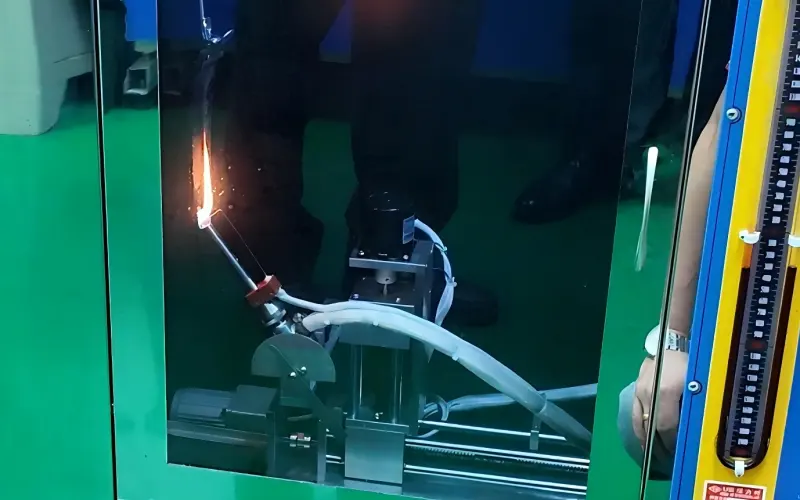
8.Cost and Economic Analysis of Neoprene Rubber Conveyor Belt
Buying a neoprene rubber conveyor belt is not just a purchasing decision. It is an operational investment. Price per meter tells only part of the story; what really matters is how long the belt runs, how often it needs replacing, and how much downtime it avoids. Let’s look at the economics from every angle.
8.1 Purchase Price vs. Service Life
SBR belts come cheap, but they often fail in oily or outdoor conditions. Service life can be cut short by 30–50% compared with neoprene. That means more orders, more changeovers, and more hidden costs.
A neoprene conveyor belt usually delivers 1.5 to 2 times the service life of SBR in mixed environments. That gain comes from better oil resistance, stronger weather stability, and moderate heat tolerance. Over time, the extra months of uptime outweigh the higher initial cost.
8.2 Downtime: The Real Cost Driver
Every plant manager knows downtime costs more than parts. According to the International Society of Automation (ISA), unplanned manufacturing downtime costs between $5,000 and $20,000 per hour, depending on the industry (ISA Report).
When a belt swells, cracks, or slips, conveyors stop. Crews scramble. Production halts. Those hidden costs are far higher than the savings from a bargain SBR belt. By holding its shape longer, a neoprene rubber conveyor belt cuts the number of breakdowns, directly lowering downtime bills.
8.3 Maintenance and Labor
Changing a belt is never simple. Even a well-trained crew can spend 4–8 hours on removal, splicing, and re-tracking. Add overtime pay, safety risks, and lost production, and the labor bill climbs fast.
Because neoprene belting resists oil swelling and outdoor cracking, it extends replacement intervals. That means crews work on planned shutdowns, not emergency calls. The savings show up not only in payroll but also in morale—nobody likes a midnight belt change.
8.4 Total Cost of Ownership (TCO)
The smartest buyers look at total cost of ownership. This includes purchase price, service life, downtime, labor, and safety compliance. SBR may look cheapest on day one, but its short life and higher failure rate drive up costs. NBR and EPDM perform well in extreme conditions but come with a high price tag.
A neoprene rubber conveyor belt sits in the middle. It costs more than SBR but less than NBR or EPDM, while offering durability that covers oil, weather, and moderate heat. That balance makes its TCO highly competitive in real-world operations.
8.5 Why Reliability Pays Off
When you add it up—purchase, downtime, labor, and risk—the answer is clear. The neoprene rubber conveyor belt is not just a cover compound. It is a safeguard for production schedules and operating budgets. In industries where every hour of uptime matters, reliability is the investment that pays for itself.

9.Procurement Guidelines for Neoprene Rubber Conveyor Belt
When you request a neoprene rubber conveyor belt, suppliers can only design accurately if you provide precise parameters. Below are the essential details every quotation should include, along with why each one matters.
9.1 Conveyor Belt Width
Width sets the basic load capacity. Standard widths run from 300 mm to 3,500 mm. A mismatch leads to poor tracking or spillage. Always state the exact width of your conveyor system.
9.2 Total Belt Thickness
Overall thickness defines durability and flexibility. Typical neoprene belts range from 5+ mm. Too thin means early wear; too thick increases energy consumption and pulley stress.
9.3 Top Cover Thickness
The top cover absorbs abrasion, heat, and oil exposure.Most Rubber Conveyor Belt uses 1.5-30mm.Choosing the wrong thickness is one of the fastest ways to shorten belt life.
9.4 Bottom Cover Thickness
The bottom cover protects against wear on pulleys and idlers. Most Conveyor belts use 1.5-20mm. If idler spacing is wide or loading is heavy, request a thicker bottom cover.
9.5 Number of Fabric Plies
For non–steel cord belts, fabric plies directly control strength and overall thickness.
- 2-ply → light service, small conveyors
- 3-ply → medium duty
- 4–5 ply → heavy bulk handling
Specifying plies avoids under-strength belts that elongate under load.
9.6 Tensile Strength
Tensile strength, measured in N/mm, determines load capacity.
- Light duty: 100–200N/mm
- Medium duty: 250–350 N/mm
- Heavy duty: 400–630 N/mm
This figure must align with conveyor length, lift height, and loading rate. Standards like ISO 14890 reference tensile strength classes for textile belts .
9.7 Rubber Standard or Physical Conditions
If you don’t know the exact rubber grade, describe the operating environment:
- Heat → continuous 120°C, peaks 150°C(example)
- Flame → must self-extinguish within 15 seconds (ISO 340)
- Oil → contact with lubricants or oily bulk materials
This allows the supplier to recommend the correct neoprene beltingor advise if NBR or EPDM is needed.
9.8 Total Length
Specify the roll length and total order. A 200 m order differs from a 2,000 m project in both production and logistics. Incorrect length data causes delays in splicing and installation.
9.9 Geographic Location of Use
Climate impacts performance. Tropical zones with high humidity accelerate aging, while cold climates demand belts with low-temperature flexibility. Sharing the site location helps the supplier match the formulation to your environment.
9.10 Why Precision Matters
A neoprene rubber conveyor belt built on vague specs is a gamble. It may wear out early, fail under load, or miss compliance requirements. Supplying these nine parameters gives the manufacturer what they need to engineer the right product. The result is fewer breakdowns, lower operating costs, and a belt that performs as expected in your conditions.
Parameter | Value / Specification (to be filled by buyer) | Notes / Reference Standards |
1. Conveyor Belt Width | ___ mm (300–3,500 mm) | Must match conveyor system design |
2. Total Belt Thickness | ___ mm (5+ mm typical) | Affects flexibility and durability |
3. Top Cover Thickness | ___ mm (1.5–30 mm typical) | Choose based on abrasion, oil, or heat exposure |
4. Bottom Cover Thickness | ___ mm (1.5–20 mm typical) | Protects carcass from pulley/idler wear |
5. Number of Fabric Plies | ___ plies (2–6 common) | Defines tensile strength and total thickness |
6. Tensile Strength | ___ N/mm (100–630 N/mm typical) | Reference ISO 14890 classes |
7. Rubber Standard / Conditions | e.g., Heat 120°C continuous / Flame ≤15 sec self-extinguish / Oil exposure | Reference ISO 340 for flame resistance |
8. Total Length | ___ meters (per roll and total order) | Impacts splicing and logistics |
9. Geographic Location of Use | ___ (City / Country) | Climate influences material choice |
10.Maintenance Tips for Neoprene Rubber Conveyor Belt
Even the best neoprene rubber conveyor belt can fail early if it’s not handled properly. Good maintenance extends service life, reduces downtime, and saves costs. Here are the key practices every plant should follow.
10.1 Storage Before Installation
Belt life starts before the first run. Improper storage can damage a belt permanently.
- Keep rolls in a dry, ventilated warehouse, away from direct sunlight.
- Avoid contact with oils, solvents, or sharp objects.
- Store at room temperature; extreme heat or cold causes premature aging.
- Do not hang rolls vertically—always place them flat on pallets.
The ISO 5285 guideline on rubber conveyor belt storage sets similar rules, confirming that poor storage is one of the main causes of early belt failure (ISO 5285).
10.2 Correct Use in Daily Operation
Even during service, belts fail more from misuse than from material limits.
- Avoid overloading.Excess weight causes stretching and ply separation.
- Keep pulleys and idlers aligned.Misalignment increases edge wear.
- Protect from sharp material.Install proper chutes or skirt boards.
- Clean regularly.Residues of oil, chemicals, or wet fines speed up cover degradation.
A neoprene conveyor belt is strong against oil and weather, but it still needs a stable operating environment to reach its full lifespan.
10.3 Routine Inspection
Small defects grow fast if ignored. A weekly checklist reduces surprises:
- Look for edge fraying, surface cracks, or blistering.
- Check splice areas for separation.
- Measure belt tracking—misaligned belts cut service life in half.
- Record wear thickness to plan replacements before a breakdown.
Following an inspection routine aligns with OSHA’s preventive maintenance recommendations for bulk material handling equipment (OSHA Guide).
10.4 Handling Common Failures
- Surface swelling from oil:Often caused by exposure to fluids beyond neoprene’s rating. Switch to NBR in extreme cases.
- Cracking from sunlight or ozone:Use protective covers or store spares properly.
- Splice failure:Ensure splicing is done with compatible adhesives and under controlled conditions.
Prompt action can often save a belt from full replacement.
10.5 Why It Pays Off
A well-maintained neoprene rubber conveyor belt delivers years of reliable service. Skipping basic care turns a long-life product into a short-term cost. By combining proper storage, correct use, routine checks, and quick fixes, you gain maximum value and avoid unnecessary downtime.

11.Why Choose Neoprene Rubber Conveyor Belt
A neoprene rubber conveyor belt is not just another material option—it is a reliable balance between cost and performance. It lasts longer than SBR in oily or outdoor conditions, avoids the premium cost of NBR and EPDM, and provides steady service in environments where downtime is expensive.
The real advantage is stability. With documented resistance to oil, weather, and moderate heat, neoprene belts give you predictability. And in bulk handling, predictability is profit.
If you are planning a new line or replacing an old belt, the next step is simple:
- Define your width, thickness, cover layers, ply count, and tensile strength.
- Describe your operating conditions: oil, heat, flame, climate.
- Share your installation length and location.
With this data, a supplier can deliver a neoprene conveyor belt that matches your site, complies with standards, and runs longer without surprises.
Reliable belts mean fewer shutdowns, lower costs, and smoother operations. That is why neoprene continues to be one of the smartest choices in conveyor systems today.
12.FAQ on Neoprene Rubber Conveyor Belt
1. How hot can a neoprene rubber conveyor belt run?
Standard belts handle up to 93°C in continuous service. Special heat-resistant neoprene grades extend to 150–200°C. Beyond this, other compounds like EPDM are more suitable.
2. Is neoprene cheaper than NBR?
Yes. A neoprene conveyor belt usually costs 15–25% less than an NBR belt. NBR offers stronger oil resistance, but many plants choose neoprene for its balanced performance and lower price.
3. Can neoprene be used in food applications?
Not for direct food contact. Standard neoprene is not food-grade. It can transport packaged goods or oily by-products, but direct handling requires compounds that comply with FDA 21 CFR 177.2600.
4. What is the expected service life?
In mixed conditions, a neoprene rubber conveyor belt typically lasts 3–5 years. That’s about 1.5–2 times longer than SBR belts under similar duty. Proper storage, alignment, and routine checks extend lifespan further.
5. Does climate affect performance?
Yes. High humidity and strong UV in tropical regions accelerate aging. Cold environments require belts tested for low-temperature flexibility. Always consider the local climate when selecting a belt.


